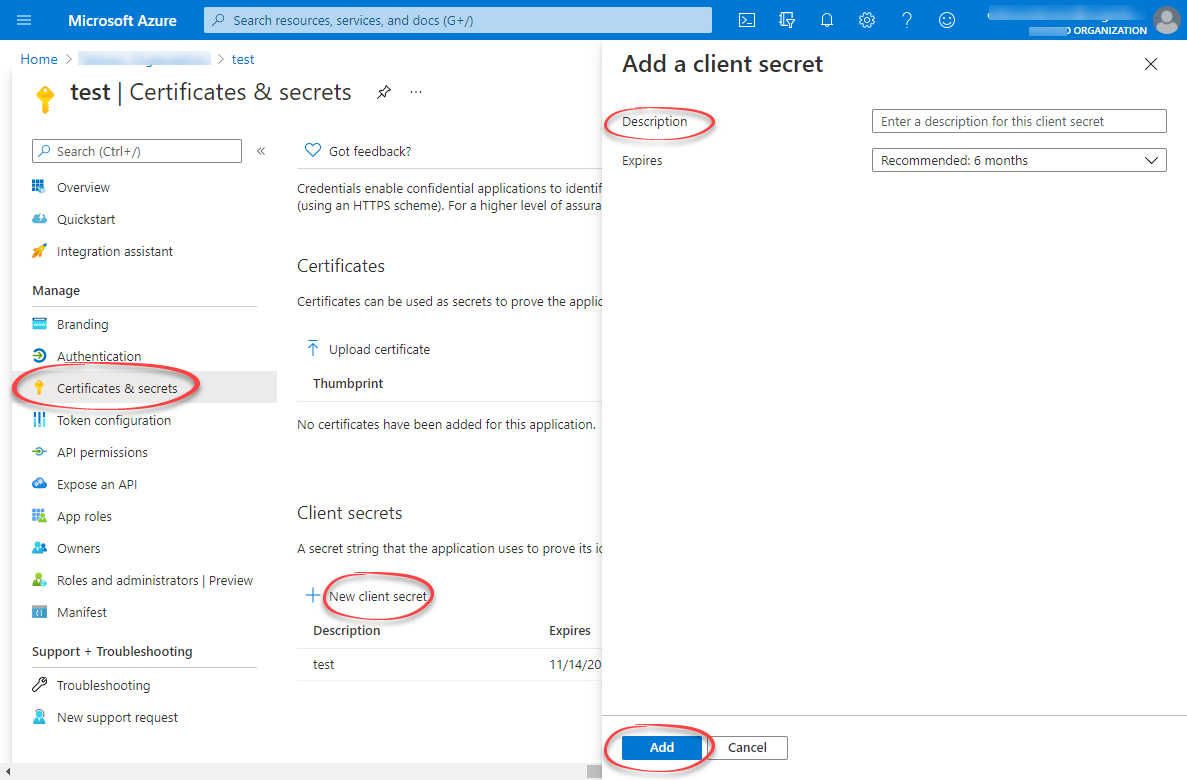Before you start
Make sure you have registered the Cognite API and the CDF application in Microsoft Entra ID and set up Microsoft Entra ID and CDF groups to control access to CDF data.To perform the steps below, you need to be an administrator of Azure AD.
Step 1: Register an app in Microsoft Entra ID to use with Transformations
1
Sign in to Azure portal
Sign in to the Azure portal as an admin.
2
Select your tenant
If you have access to multiple tenants, use the Directory + subscription filter in the top menu to select the tenant in which you want to register an application.
3
Open Microsoft Entra ID
Search for and select Microsoft Entra ID.
4
Create new app registration
Under Manage, select App registrations > New registrations.
5
Register the application
In the Register an application window, enter the app name, and then select Register.
6
Copy the Application ID
Copy and make a note of the Application (client) ID. This value is required for authentication when reading and writing data in Transformations.
7
Create a client secret
Under Manage, select Certificates & secrets > New client secret.

8
Configure the secret
Enter a client secret description and an expiry time, and then select Add.
9
Copy the client secret value
Copy and make a note of the client secret in the Value field.
Step 2: Create a group in Azure AD and add the registered app as its member
1
Open Groups in Azure AD
Open the overview window in Azure AD and select Manage > Groups.
2
Create a group
Create a group.
3
Add members to the group
Open the group. Under Manage, select Members > Add members.
4
Add the app as a member
Find the app you created above and click Select.
5
Add users
Add all users you want to have access to Transformations as members.
6
Copy the Object ID
Return to the overview, and then copy and make a note of the Object Id.

Step 3: Create a group in CDF and link to the Microsoft Entra ID group
1
Navigate to Groups in CDF
Sign into CDF as an admin and navigate to Access > Groups.
2
Create a new group
Select Create new group and enter a unique name for the group.
3
Add capabilities
Add
read and write capabilities accordingly for the CDF resources you want to read and write using transformations. For instance, if you are transforming the data in CDF RAW and writing the data to assets, you must add raw:read and asset:write capabilities.The minimum requirement is to add
projects:list, groups:list, transformations:read, transformations:write, and sessions:create.4
Create the group
Select Create.
5
Configure OpenID connect
Open the OpenID connect tab and insert your
token_url. The token_url contains the ID of your Microsoft Entra ID tenant. To find your tenant ID, see this article.To schedule transformations, you must add the capability
sessions:create and set the token_url to maintain access to Transformations for an extended time period.To enable Run as current user for transformations, you must add the sessions:create capability.6
Link to Microsoft Entra ID group
Link the transformations group to a Microsoft Entra ID group:
- In the Source ID field, enter the Object Id for the AAD group exactly as it exists in AAD. You can use the same group Id for multiple transformations.
- In the Source name field, enter the name of the group in Azure AD.
Step 4: Run transformations
Verify that the configuration is successful by following the steps in Transform data.Transformations with the same Client ID run as the same user with the same access. This ID and the Client secret must be given before a user can schedule and run transformations.